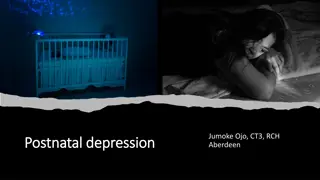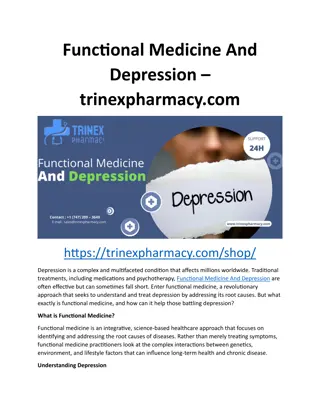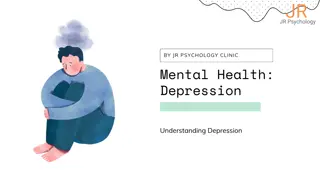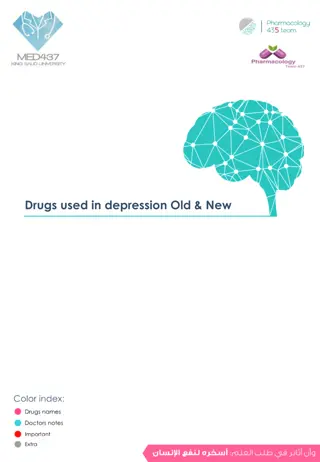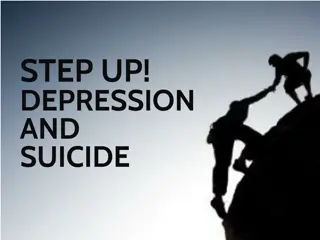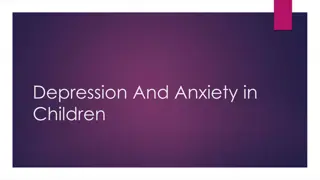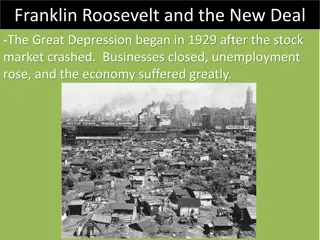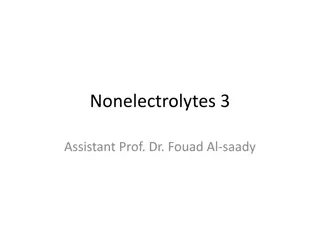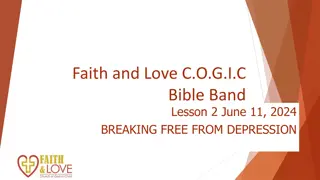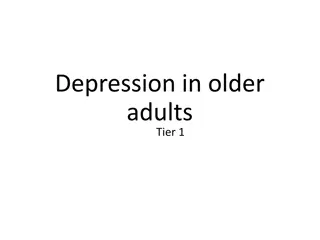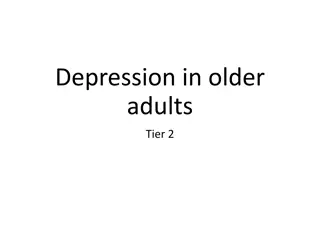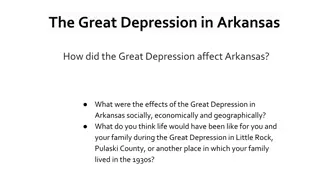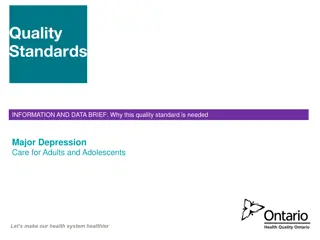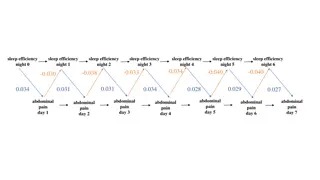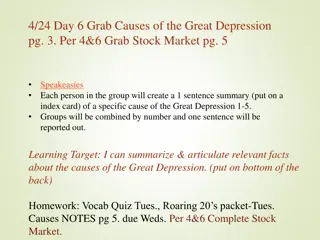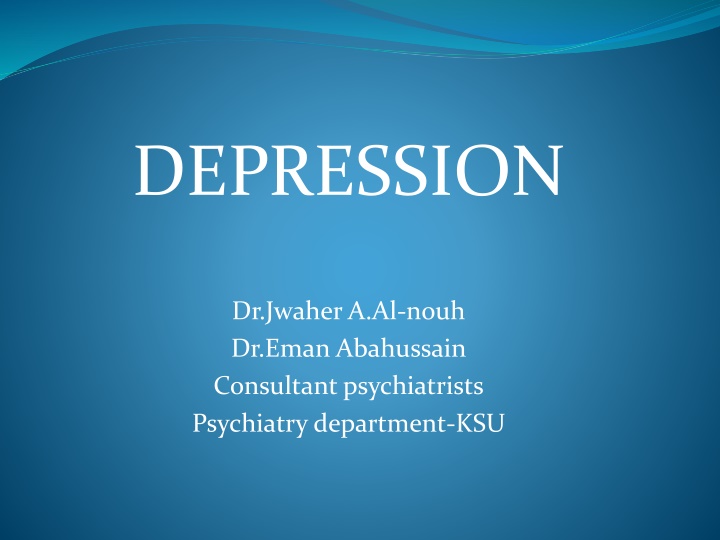
Depression
Explore the prevalence, criteria, and symptoms of depression, a mental health condition characterized by persistent feelings of sadness, loss of interest, and more. Learn about the demographics, onset age, and key diagnostic criteria for major depressive disorder.
Download Presentation

Please find below an Image/Link to download the presentation.
The content on the website is provided AS IS for your information and personal use only. It may not be sold, licensed, or shared on other websites without obtaining consent from the author. If you encounter any issues during the download, it is possible that the publisher has removed the file from their server.
You are allowed to download the files provided on this website for personal or commercial use, subject to the condition that they are used lawfully. All files are the property of their respective owners.
The content on the website is provided AS IS for your information and personal use only. It may not be sold, licensed, or shared on other websites without obtaining consent from the author.
E N D
Presentation Transcript
DEPRESSION Dr.JwaherA.Al-nouh Dr.Eman Abahussain Consultant psychiatrists Psychiatry department-KSU
Introduction: Mood is a pervasive and sustained feeling that is experienced internally and that influences a person's behavior,thougthand perception of the world. Affect is the external expression of mood. Healthy persons experience a wide range of moods and have an equally large range of affective expressions; they feel in control of their moods and affects. Normal mood: euthymia. Any change in mood :disturbance of mood. Disturbance of mood can be :elevated, or depressed. Depressed mood: described as :down, blue, unhappy, or simply sad
Epidemiology : lifetime prevalence almost 17 percent (15-25%). Male: female = 1:2 occurs most often in persons without close interpersonal relationships or in those who are divorced or separated. The mean age of onset is about 40 years, with 50 percent of all patients having an onset between the ages of 20 and 50. can also begin in childhood or in old age. Recent epidemiological data suggest that the incidence of major depressive disorder may be increasing among people younger than 20 years of age and This may be related to the increased use of alcohol and drugs of abuse in this age group
Criteria: According to DSM-IV-TR, a major depressive disorder occurs without a history of a manic, mixed, or hypo manic episode. A major depressive episode must last at least 2 weeks, and typically a person with a diagnosis of a major depressive episode also experiences at least five symptoms from a list that includes low mood or loss of interest ,changes in appetite and weight, changes in sleep and activity, lack of energy, feelings of guilt, problems thinking and making decisions, and recurring thoughts of death or suicide.
Symptoms of depression : depressed mood most of the day, nearly every day, as indicated by either subjective report (e.g., feels sad or empty) or observation made by others (e.g., appears tearful). Note: In children and adolescents, can be irritable mood markedly diminished interest or pleasure in all, or almost all, activities most of the day, nearly every day (as indicated by either subjective account or observation made by others) significant weight loss when not dieting or weight gain (e.g., a change of more than 5% of body weight in a month), or decrease or increase in appetite nearly every day. Note: In children, consider failure to make expected weight gains. insomnia or hypersomnia nearly every day
psychomotor agitation or retardation nearly every day (observable by others, not merely subjective feelings of restlessness or being slowed down) fatigue or loss of energy nearly every day feelings of worthlessness or excessive or inappropriate guilt (which may be delusional) nearly every day (not merely self-reproach or guilt about being sick) diminished ability to think or concentrate, or indecisiveness, nearly every day (either by subjective account or as observed by others) recurrent thoughts of death (not just fear of dying), recurrent suicidal ideation without a specific plan, or a suicide attempt or a specific plan for committing suicide
Etiology Biological Factors Nor epinephrine Serotonin Dopamine Genetic Factors Psychosocial Factors stressful events premorbid personality factors cognitive distortions
Differential Diagnosis Medical Disorders Thyroid diseases Adrenal diseases Parkinson's disease, dementing illnesses cerebrovascular diseases tumors. Substance(Cardiac drugs, antihypertensive, sedatives, hypnotics, antipsychotics, antiepileptic, antiparkinsonian drugs, analgesics, antibacterial, and antineoplastics are all commonly associated with depressive symptoms.
Pseudo dementia Other mental disorders (eg. schiz.,bipolardis.,) Bereavement Dysthymia Adjustment disorder
Course An untreated depressive episode may lasts 6 to 13 months; most treated episodes last about 3 months or less The withdrawal of antidepressants before 3 months has elapsed almost always results in the return of the symptoms. As the course of the disorder progresses, patients tend to have more frequent episodes that last longer. Over a 20-year period, the mean number of episodes is five or six.
Treatment : Hospitalization Psychotherapy Pharmacotherapy (anti-depressant , ECT,)
Complications: Occupational performance Social and personal relations impairment Self medication :alcohol and substance dependence. Risk of suicide.(15%)
dysthymia At least tow years history of chronic low mood with no remission periods more than two months ,and accompanied by additional depressive symptoms that do not meet criteria for MDD.


